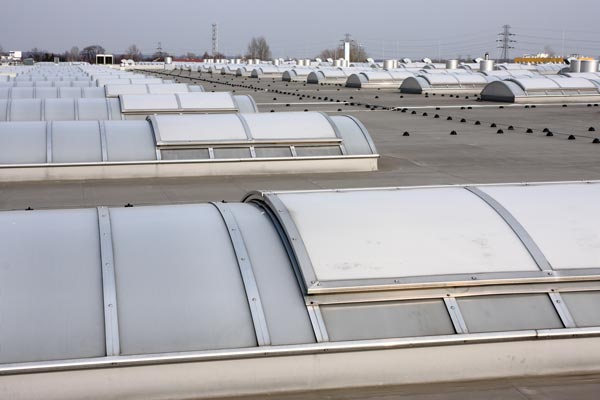
Flat roofs are a popular option for many businesses and multi-housing units, such as apartment complexes, across the DFW metroplex. This type of roofing is sought after due to its accessibility, durability, and longevity.
Unfortunately, flat roofs do have a few setbacks that make maintenance essential for them to ensure that the building’s structure continues to be protected from the elements. Minor issues on a flat roof can easily turn into catastrophic disasters, especially if business owners or building maintenance staff are unsure of the signs to look out for.
As a way to better serve our community, our team has created this guide to help you notice the signs that your flat roof may need repairs. As always, if you have any questions or would like a professional to inspect your commercial roof, the team at Acme Roof Systems is more than happy to help! Here are the signs that your flat roof needs repairs:
1. Flashing is Damaged
Flashing is a flat piece of metal that is used to waterproof the perimeter and any protrusions, such as a chimney, on a roof. Flashing is effective in directing water away from the seams, preventing them from getting trapped or entering cracks in the roof. Without it, water damage would be rampant on your roof, endangering your roof’s structural integrity and encouraging mold and mildew growth.
It is important to take note of the metal flashing around your flat roof’s vents, chimneys, and other fixtures such as a skylight. Pay particular attention to any signs of warping of the metal, cracking, or missing pieces. Damaged flashing means that your roof is vulnerable to moisture damage.
If you catch flashing damage early enough, the repairs can be done easily by a certified commercial roofing specialist, saving you time and money. However, if the damage goes unnoticed, not only will the entire flashing need to be replaced but your roof may need more extensive repairs as well. Check your roof’s flashing periodically, especially after severe storms to ensure that the flashing is holding strong.
2. There is a Build-Up of Moisture

Flat roofs are designed to be watertight, but over time, cracks, curling, and damaged flashing can lead to trapped moisture. This creates high humidity within these areas, resulting in water stains on the ceiling, an open infestation for rodents and insects to burrow, and mold and mildew growth.
All of these issues can lead to unsafe conditions within your building, since mold, mildew, and pest infestations may pose health risks. Lookout for stains, discolorations, or black spots on your walls or ceiling, as these will be your warning signs of ensuing trouble.
3. There is Pooling Water On Your Roof
A roof with pooling water is common after heavy rainstorms. Typically, this water will either evaporate or go down your gutter or drainage system to the ground, after a few days.
If you go to inspect your flat roof after a few days and notice that the water has not drained, this could be an indication that your gutter or drainage system is clogged or damaged. An experienced roofing professional can help you get to the root of the problem and solve it quickly, preventing the water from damaging your roof. If the issue is left unaddressed, the pooling water can lead to leaks or a damaged roof membrane.
4. You Can See the Exposed Undercoat
Over time, inclement weather and old age can cause flat roof materials, such as the tar or stone layer to lift or curl away. This exposes the undercoat, which is not as resistant to water and impact damage. The area must be completely repaired to prevent damage to the undercoat and keep it from tearing or pulling away, which will require more extensive repairs.
5. Blistering and Cracking Flat Roofing Material
If your flat roof is showing signs of blistering and cracking, it is in need of repairs. This issue is quite common for flat roofs that are constantly under high temperatures. Some blistering and cracking can be repaired easily. More severe cases where it spreads over the entire roof though will require the entire membrane to be replaced.
6. Notice Buckling or Sagging

Newer buildings will often go through foundational shifts as the soil settles, sometimes causing flat roofs to buckle. If this happens, you will want to contact your commercial roofing specialist right away to fix the issue before it becomes a bigger problem.
Another sign to be on the lookout for is sagging. Sagging is caused by moisture issues accumulating over time. This issue is extremely dangerous as it affects the amount of weight the roof can handle, increasing the risk of a cave-in.
Notice Any of the Above Signs? Acme Roof Systems Can Help!
If your commercial flat roof needs repairs, the dedicated commercial roofing specialists at Acme Roof Systems can help! We have been serving the DFW metroplex since our founding in 1995. Contact our team today for more information on our commercial roofing services or to schedule an appointment!
FREE Roof Inspection
We offer transparent pricing with no hidden fees. Fill out the form below to request your free estimate today.
